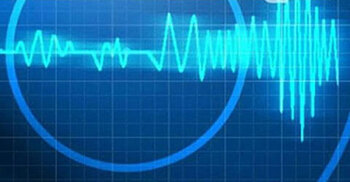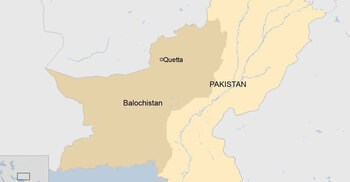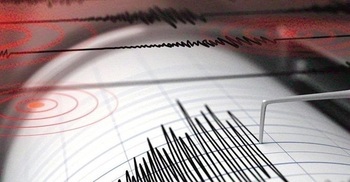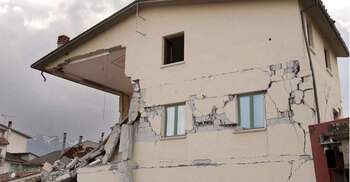Death toll from Afghanistan earthquake climbs to 1,000

The death toll from a powerful earthquake in Afghanistan has climbed to 1,000, with more than 1,500 others wounded, according to the Taliban’s the Culture and Information Department, as rescuers try to reach the site of the disaster in remote Paktika and Khost provinces.
The United States Geological Survey (USGS) said the magnitude of the earthquake in the early hours of Wednesday was 5.9, revising an initial estimate at 6.1. The epicentre of the tremor was about 46km (27 miles) from the city of Khost, near the Pakistani border, the USGS said.
“People are digging grave after grave,” said Muhammad Amin Huzaifa, head of the Information and Culture Department in hard-hit Paktika.
“It is raining also, and all houses are destroyed. People are still trapped under the rubble,” he told journalists.
Earlier, interior ministry official Salahuddin Ayubi earlier said the death toll was likely to rise “as some of the villages are in remote areas in the mountains and it will take some time to collect details”.
Yaqub Manzor, a tribal leader from Paktika province, said survivors were mobilising to help those affected.
“The local markets are closed and all the people have rushed to the affected areas,” he told AFP news agency by telephone.
Footage from Paktika province showed victims being carried into helicopters to be airlifted from the area. Images widely circulating online from the province showed destroyed homes, with residents going through the rubble.
Remote region
Afghan journalist Ali M Latifi, reporting from Kabul, said people as far as the Afghan capital, some 200km (124 miles) away, felt the aftershocks.
Authorities are reporting hundreds of houses have been destroyed in the region, which has not seen a lot of development, Latifi said.
“Authorities have sent helicopters and are calling for aid agencies to come in and rescue people from the rubble. But it’s a remote area and harder to reach,” he added.
“The international rescue committee said they have deployed a local medical team to try and respond to the disaster.
“The biggest issue is how to reach the sites because they are further away from the provincial capitals, and the road conditions could be difficult. So really the issue is how long it’s going to take them to get there,” the Afghan journalist said.
Residents in the remote area near the Pakistani border searched for victims dead or alive by digging with their bare hands through the rubble, according to footage shown by the Bakhtar news agency.
It was not immediately clear if heavy rescue equipment was being sent, or if it could even reach the area.
At least 2,000 homes were destroyed in the region, where on average every household has seven or eight people living in it, said Ramiz Alakbarov, the UN deputy special representative to Afghanistan.
Hedayatullah Paktin, journalist and political writer, said that most houses in the region are built in the traditional style, with the use of soil, stone and other materials, adding that concrete houses are rare.
Unfortunately, the quake hits at a time when Afghanistan is already suffering an economic crisis, with little access to basic needs and medical facilities, Paktin told Al Jazeera from Kabul.
Strong jolts felt in Pakistan, Iran
Tremors could be felt in neighbouring Pakistan and Iran. However, there were no immediate reports of damage or casualties in the two countries.
The Pakistan Meteorological Department said the quake jolted parts of the Punjab and Khyber Pakhtunkhwa provinces, according to the Dawn news website, which added that there was no immediate news of deaths or damage.
Some remote areas of Pakistan saw reports of damage to homes near the Afghan border, but it was not immediately clear if that was due to the earthquake, said Taimoor Khan, a disaster management spokesperson in the area.
Pakistan’s Prime Minister Shahbaz Sharif in a statement offered his condolences over the earthquake, saying his nation will provide help to the Afghan people.
A country already in shock
The disaster heaps more misery on a country where millions face increasing hunger and poverty and the health system has been crumbling since the Taliban retook power nearly 10 months ago amid the US and NATO withdrawal.
In response to the Taliban takeover, many governments have imposed sanctions on Afghanistan’s banking sector and cut billions of dollars worth of development aid.
With only a handful of airworthy planes and helicopters left since the Taliban returned to power, any immediate response to the latest catastrophe is further limited.
“The government is working within its capabilities,” tweeted Anas Haqqani, a senior Taliban official.
“We hope that the International Community & aid agencies will also help our people in this dire situation.”
In a rare move, the Taliban’s supreme leader, Haibatullah Akhundzadah, who almost never appears in public, pleaded with the international community and humanitarian organisations “to help the Afghan people affected by this great tragedy and to spare no effort”.
The United Nations and European Union were quick to offer assistance.
“Inter-agency assessment teams have already been deployed to a number of affected areas,” the UN Office for the Coordination of Humanitarian Affairs (UNOCHA) in Afghanistan tweeted.
Tomas Niklasson, EU special envoy for Afghanistan, tweeted: “The EU is monitoring the situation and stands ready to coordinate and provide EU emergency assistance to people and communities affected.”
Prime Minister Mohammad Hassan Akhund convened an emergency meeting at the Presidential Palace to coordinate the relief effort for victims.
The UN resident coordinator in Afghanistan, Ramiz Alakbarov, expressed condolences to the victims and said that the world body’s agencies were responding to the earthquake’s devastation.
“Response is on its way,” he wrote on Twitter.
Mountainous Afghanistan and the larger region of South Asia along the Hindu Kush mountains, where the Indian tectonic plate collides with the Eurasian plate to the north, have long been vulnerable to devastating earthquakes.
In 2015, a major earthquake that struck the country’s northeast killed over 200 people in Afghanistan and neighbouring northern Pakistan.
A similar magnitude 6.1 earthquake in 2002 killed about 1,000 people in northern Afghanistan. And in 1998, a magnitude 6.1 earthquake and subsequent tremors in Afghanistan’s remote northeast killed at least 4,500 people.
Source: Al Jazeera and News Agencies







